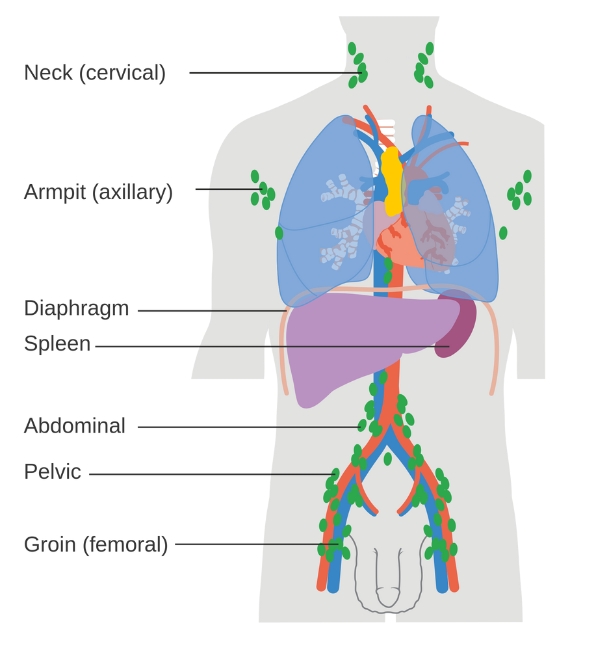Like our blood vessels, we have a network of small vessels called the lymphatic system, carrying fluid and fats around the body. Throughout this network are small swellings called lymph nodes, which filter the lymphatic fluid and where lymphocytes (white blood cells) mature.
Cancerous lymphoma cells usually start in the lymph nodes and can spread to the bone marrow and bloodstream.
The image below shows the location of the lymph nodes where lymphoma most commonly develops.

Image credit: CRUK via Wikimedia Commons(external link)
Lymphoma is not a type of leukaemia, although it has similarities. The main difference is that lymphoma starts in the lymph nodes and leukaemia starts in the bloodstream or bone marrow. They are treated as separate conditions.
Each year in Aotearoa New Zealand over 1000 people are diagnosed with lymphoma, making it the 6th most common type of cancer. The majority of these people (at least 85%) have non-Hodgkin lymphoma.






